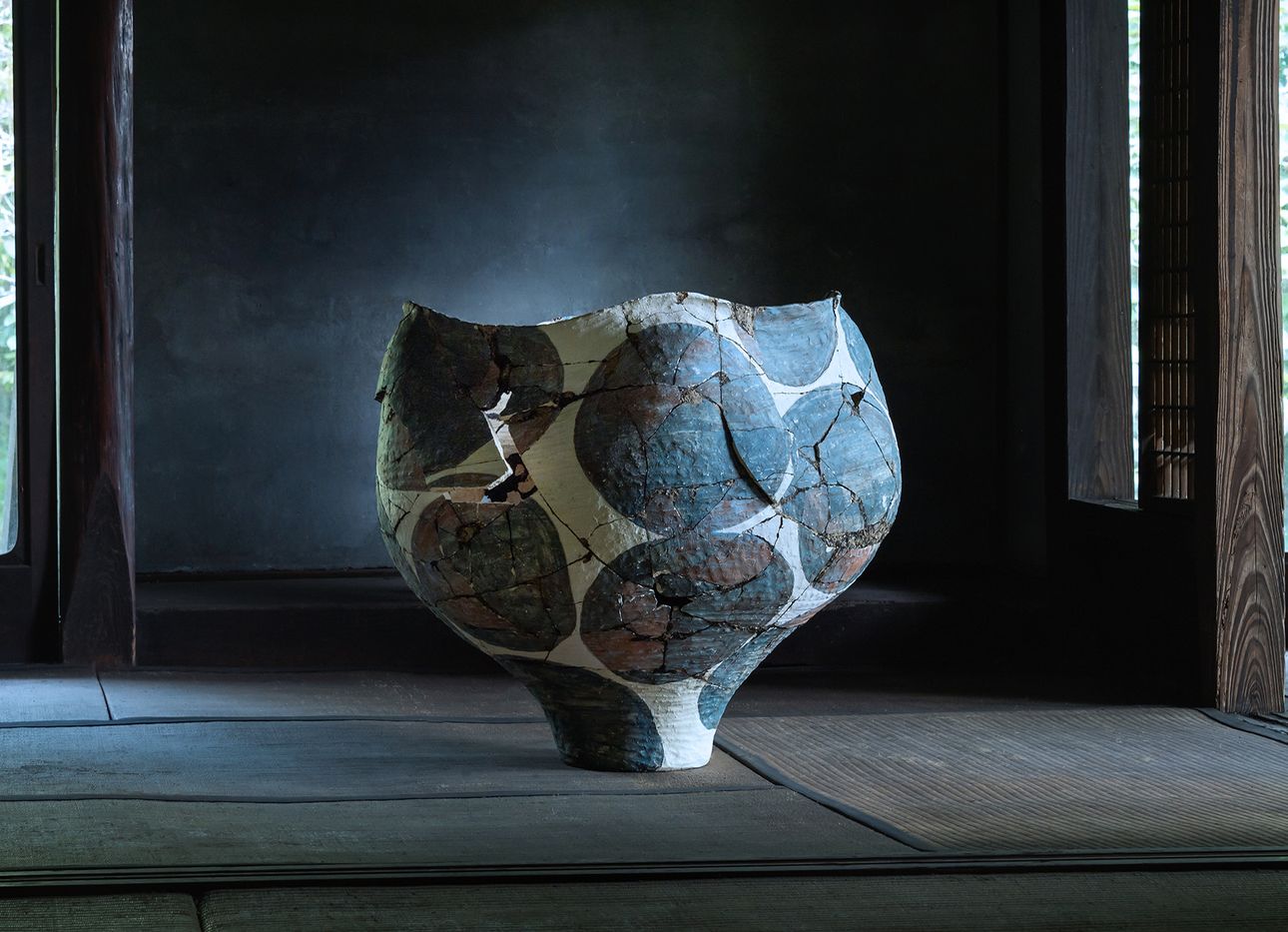
At a Los Angeles Exhibition, “Almost-Dysfunctional” Japanese Pottery That Conveys the Circle of Life
In Plato’s dialogue Timaeus, the word khôra—the territory just outside the Ancient Greek city center—is used to describe a condition that serves as a womb-like space through which all things pass and materialize. The cavernous vessels by artists Kazunori Hamana and Yukiko Kuroda, who live in Japan’s Chiba Prefecture, embody a similar concept by considering the transient, continual circle of life.
Their work, currently on view at Los Angeles’s Blum & Poe gallery (through October 23), grew out of an effort to preserve one of Hamana’s pots, which he forms by hand out of natural clay and finishes with mineral glazes that he mixes himself, after it broke in an accident. Drawing from kintsugi, the Japanese tradition of using precious metals to mend broken ceramics, and an ancient Chinese technique of riveting, Kuroda used metal staples to hold the vessel’s shards together. The pair later expanded upon the theme of repair and reuse in an entire series of vessels, in which Kuroda uses colored urushi (Japanese lacquer), gold, silver, and pewter to mend fractured areas. She regularly embellishes the surfaces with cast-off clay fragments from Hamana’s production process or layers of found materials, such as bits of abandoned agricultural matter sourced from around her home, which previously belonged to a farmer, including bamboo baskets, chicken wire, and dried grass. Remnants of rice grains, harvested from Hamana’s own organic rice fields, regularly appear on the pots, arranged in delicate linear planes.
Kuroda’s interventions quietly enhance Hamana’s tactile, often large works: Each is irregular in shape and texture, with a surface covered in various painterly gestures—stripes, zigzags, polka dots, drips, scratches—as well as Hamana’s own fingerprints, retained from his sculpting. Once fired, Hamana places the pieces outdoors, subjecting them to the unpredictable influences of the weather and environment, and consequently embedding them with marks of the natural world. (Some vessels created by Hamana alone also feature in the exhibition.)
Beyond their formal qualities, the receptacles reflect the artists’ personal values, which eschew mainstream inclinations toward consumption and productivity in favor of a slower, more conscious approach to life and the objects within it. “My ceramic practice, and Yukiko’s kintsugi practice, question and reject today’s mass production and mass consumerism,” Hamana says. “This feeling of doubt towards what’s accepted in the contemporary world pushes [us] to make these almost-dysfunctional objects.”